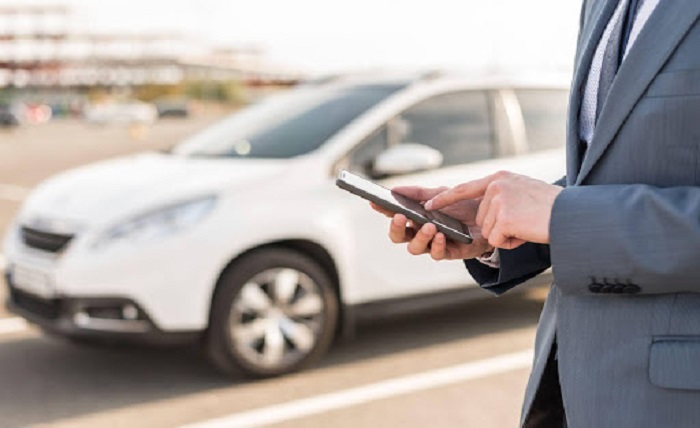Selling a car is more than just finding a buyer and handing over the keys. When you take the process online, it becomes even more important to stay cautious. While digital platforms make things faster and easier, they also open the door to scams if you’re not paying attention. From payment fraud to delayed transfers, online car sellers in India face several challenges.
If you’re ready to list your car and connect with buyers online, here’s a complete guide to help you do that securely and smartly, without getting caught in any traps.
Start with Your Car Documents in Place
Before you even think about putting up a listing, your documents should be ready. Here’s what you’ll need:
- Original Registration Certificate (RC)
- Valid insurance papers
- PUC (Pollution Under Control) certificate
- Road tax receipts (if applicable)
- Service records (helpful, but not mandatory)
Having all these documents sorted at the beginning saves you from unnecessary delays or suspicion later in the process.
Those looking to sell a car in Ahmedabad, Jaipur, or regions with a hotter climate should highlight the car’s cooling performance and maintenance history. The climate and road conditions here make fuel economy and suspension quality more relevant during negotiations.
Select a Platform You Can Rely On
Plenty of online options are available today, from dedicated car resale websites to classified platforms and dealer marketplaces. Don’t go for the first name that pops up on search results. Instead, spend some time checking:
- Does the platform offer verified buyer profiles?
- Are there safety features such as masked phone numbers or payment protection?
- Is the website known for handling post-sale paperwork or RC transfer support?
If a platform seems shady or is loaded with spammy listings, stay away. A bit of research now can help you avoid regret later.
Craft an Honest, Well-Written Listing
Photos and words matter. They build the first impression and filter out unserious buyers. Include clear images taken during daylight showing:
- The front, rear, and both side profiles of your car
- Tyres, dashboard, odometer, and engine bay
- Any visible dents or scratches
In your description, write naturally. Mention basic details like model, variant, fuel type, and mileage, but don’t oversell it. Transparency wins trust. Buyers prefer knowing the real condition rather than finding out unpleasant surprises during a visit.
Be Smart When Responding to Buyers
You’ll get all sorts of responses – genuine buyers, dealers, lowballers, and sometimes scammers. To stay safe, keep the following in mind:
Do:
- Stick to messaging within the platform when possible
- Speak on calls only after verifying interest
- Set clear expectations about price and availability
Don’t:
- Share copies of your documents without confirmation
- Agree to deals that feel too good to be true
- Entertain offers from overseas or unknown sources
Fix a Safe Meeting Spot
If you’re planning to sell a car in Mumbai or any other city, never invite a buyer to your home for a test drive. A public space, such as a petrol pump, mall parking, or even outside a police station, is far better. Ask the buyer to bring a valid Driving Licence and keep a friend or family member with you during the meet-up.
Let them test drive only if you’re in the passenger seat. Do not hand over the keys and stand aside. It may seem awkward, but it’s the smarter option.
Handle Payment with Caution
This step is often where people slip up. Just because a buyer shows you a payment screenshot doesn’t mean the money is in your account. Always wait for the funds to reflect in your bank balance before moving to the next step.
Preferred payment options:
- IMPS or NEFT to your bank account
- UPI (but only after confirmation on your banking app)
- Cash (only if counted and received in a safe location)
Avoid accepting partial payments with promises of the remaining amount “soon.” If the buyer insists on paying in instalments, reconsider the deal altogether.
Finalise the Sale with Proper Paperwork
This is where things get official. Once the payment is done, sign the following documents:
- Form 29: Notice of transfer
- Form 30: Application for ownership change
- Sale agreement with buyer details, price, and terms
- Handover letter mentioning the delivery date and time
Make copies of everything and get the buyer’s ID proof while you’re at it. If you’re dealing with a local agent, ensure they give you a receipt and timeline for RC transfer.
Complete Ownership Transfer at the RTO
Don’t leave this step to the buyer alone. Even if you’ve handed over the car, your legal connection stays unless the RTO processes the new ownership.
To protect yourself:
- Submit a copy of Forms 29 and 30 to the RTO
- Ask for an acknowledgement slip or email confirmation
- Keep checking the vehicle status online via the VAHAN portal
If possible, go to the RTO together. Some online services now assist with this process, too.
Post-Sale Cleanup: Don’t Forget These
Once your car is sold, tie up these loose ends:
- Inform your insurance provider to cancel or transfer the policy
- Disconnect your FASTag account from the car number
- Remove your vehicle from any app-based services or toll accounts
- Inform your local authorities if the car was used commercially
These actions ensure that no misuse or accidental liabilities come back to you.
Wrapping It Up
Selling your car online can be efficient and profitable when done right. But it’s also easy to let your guard down. By following a structured and cautious approach, you reduce risks and make the process much smoother.
Be clear. Be transparent. And most importantly, be involved in every step – from listing to final transfer.

